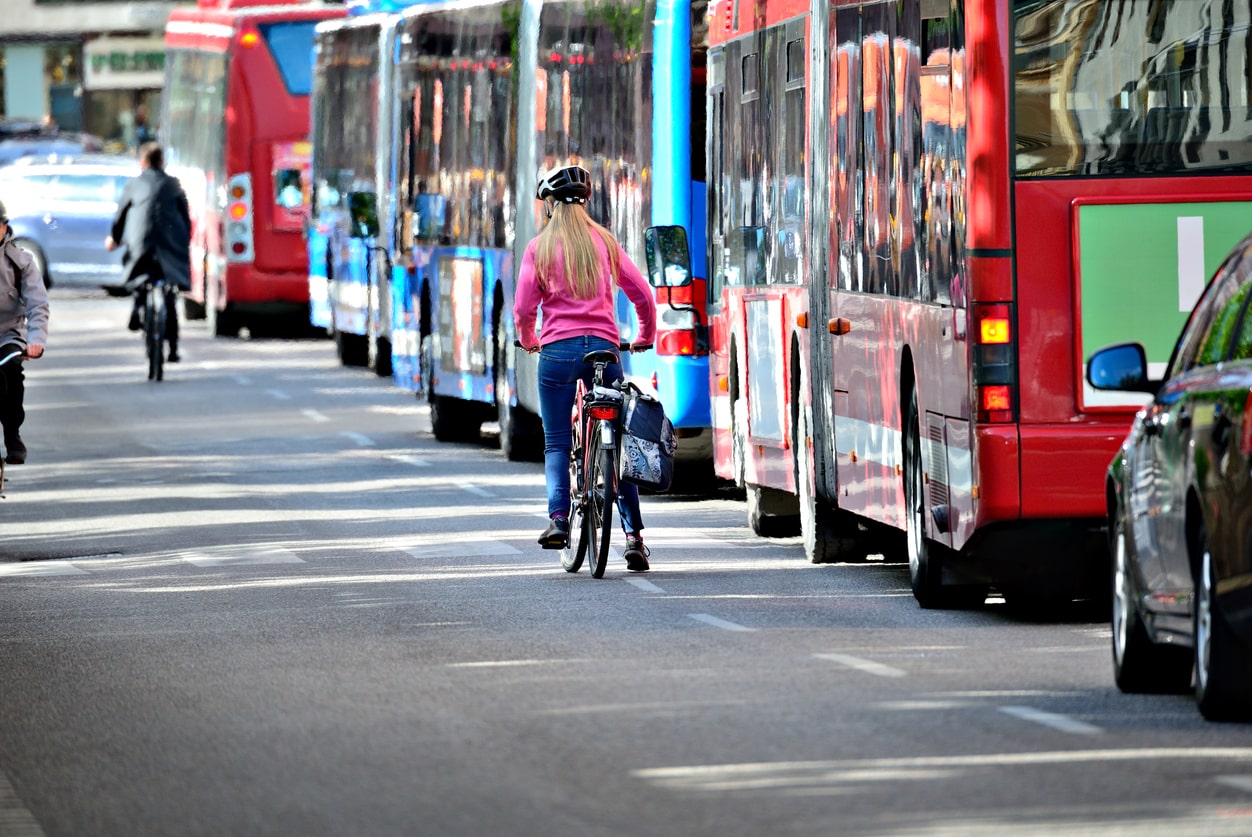Carnegie Mellon University researchers are codesigning the future of transit with people who operate buses and other mass transit vehicles. In partnership with the Amalgamated Transit Union, Transport Workers Union, and the AFL-CIO’s Technology Institute, Sarah Fox(opens in new window) and Nikolas Martelaro(opens in new window), both assistant professors at CMU’s Human-Computer Interaction Institute(opens in new window), are working to understand the impacts of autonomous technology on transportation workers’ jobs.
The research will inform new strategies for tools for pedestrian detection, lane centering, emergency response and social support. It is supported by Safety21(opens in new window), a U.S. Department of Transportation’s National University Transportation Center at CMU, and will be presented at the Department of Transportation’s Future of Transportation Summit(opens in new window) this month.
Diary entries show slice of life
The team did a yearlong diary study with mass transit operators in the United States and Canada to better understand their routines. The idea was to get a series of snapshots of their days to examine how emerging technology affects operators’ safety, workload and needs. Fox said the approach was vital for understanding operators’ daily life.
“We really advocate for a human-machine teaming approach that is collaborative and interested in ensuring that operators are augmented by driver-assistance technologies to enhance safety,” she said.
One goal of the study was to learn how to prevent safety incidents with pedestrians, cyclists and other vulnerable road users. The diary study helped the researchers understand the types of roadway conditions, pedestrians, drivers and situations that operators encounter.
It also provided insight into how operators are already using assistive technology in their vehicles, such as lane centering. Commonly found in passenger vehicles, the technology uses cameras to detect lane markings or boundaries on the road. Diary entries showed that the technology is not well-calibrated for buses — multiple operators noted that they hear constant beeping because the bus is oversized, so they switch it off.
Fox said that problems with lane centering could be considered an annoyance, but the stakes are much higher when it comes to other types of assistive technology, like hands-free driving.
“Something that we emphasize is that when you’re flying a plane you have minutes to correct a problem. When you’re driving a vehicle, you have seconds,” she said.
Transit operators as social support
In addition to providing transportation, operators support community members in many ways. Fox explained that they do far more than get people to where they need to go.
“They are often the first to respond to health emergencies on the bus or outside,” she said. “They may intervene when there are tricky situations between passengers, provide directions to passengers who are traveling or new to the area, or refer folks to social services who might be in need of that support,” she said.
Social support is also needed in nonemergencies, and the team hopes to develop tools that can aid in better communication between operators and passengers. For example, an app that could allow passengers with disabilities to convey the need for assistance before they board a bus.
Codesigning with operators makes tools safer, better
Fox said that one thing that often surprises people about this research is the collaboration with labor unions because they assume automation technology will replace workers. In contrast, automation within other transportation industries such as aviation has required higher training and skill levels. This research aims to codesign tools that could make transit operators’ jobs safer, she said.
“Sometimes people assume that transit operators would not be interested in automation or technology generally, but actually, drivers express a strong interest in well-designed advanced driver-assistance systems,” Fox said. “They might enjoy parking assist or lane centering in their own vehicle, and they recognize the value of it in terms of enhancing safety and relieving some physical aspects of the job. Critically though, it needs to be designed with transit workers at the table.”

